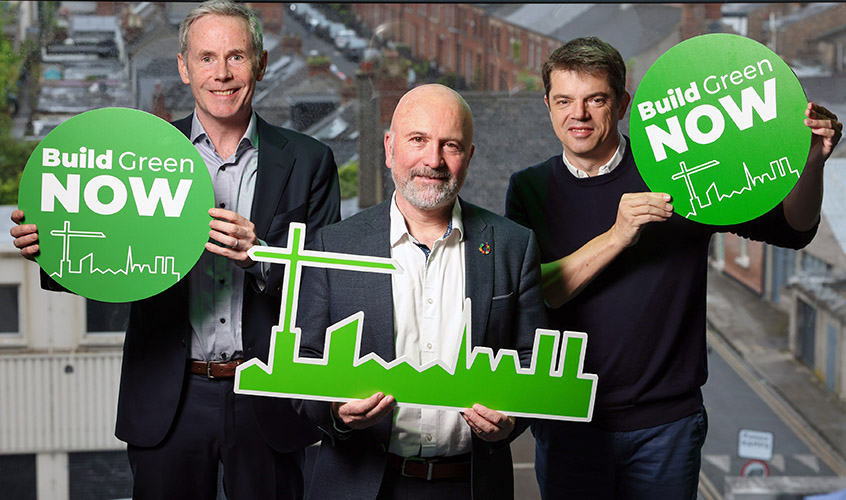
IGBC CEO Pat Barry said: “There’s no time for business as usual or for incremental steps. We can deliver sustainable and affordable homes, but we need a revolution in the way we think and act about buildings, infrastructure, and transport – and it needs to start now. But in doing so, we can create urban spaces that are greener, healthier, and offer a better quality of life for all.”
Build Green Now
Addressing the 300 delegates in his keynote address, leading French urbanist and writer Sylvain Grisot presented his vision for how our towns and cities can help to solve the resource, climate, and biodiversity crises.
“The way we build our towns and cities determines the quality of our lives and our ability to keep our home planet liveable,” he said. “Until now, our towns and cities have been part of the problem, but they can be part of the solution. If we start acting now, we can radically transform our urban spaces before 2050: filled with trees and green space, clear air and clean rivers, and net zero carbon buildings adapted to the new climate. Cities that are filled with nature, with walkable streets where children can play safely.
“But to achieve this, a gentle transition won’t be enough, we need a redirection in how we design and build our urban spaces.”
Energy Performance of Buildings Directive
The conference also heard about new European laws that will deliver greener, healthier, and more comfortable buildings in Ireland.
“The new Energy Performance of Buildings Directive (EPBD) is ambitious and provides a green, low carbon, and lower cost vision for how we heat and power our buildings,” said Pat Barry.
“Making our buildings as sustainable as possible is also the best use of limited financial and human resources – there is no point investing millions in buildings that will need to be renovated, or even torn down, in just a few decades, while thousands of properties remain vacant or under-used. But we need a more agile building regulatory system that can safely allow for faster approval of innovative low-carbon building materials and systems.”
Circularity in the built environment
Speaking on the critical importance of circularity to the built environment, Patrick Moloney, Director of Strategic Sustainability Consulting at Danish architecture and engineering firm Ramboll A/S, said: “To effectively address our planet’s greatest challenges, such as resource scarcity, climate change, and biodiversity loss, it is imperative we transition our industry to a circular economy.
“Ninety per cent of the material inputs into the economy are virgin materials. This is the critical gap that needs to be closed. All parties in the built environment value chain – from investors through to developers, contractors and manufacturers – must collaborate to achieve this.”
He added: “There’s something so central that still remains peripheral. I fundamentally believe that lowering embodied carbon is a consequence of the circular economy. It’s not something that’s done in isolation of the structural economy’s transition.”
Closing remarks
The closing remarks at Build Green Now 2024 were delivered by Marie Donnelly, Chair of the Climate Change Advisory Council, who said: “We must radically decarbonise our construction sector through specific and targeted actions, such as reducing the emissions intensity of cement production and increasing the use of sustainable timber. Adopting heat pumps at scale while developing district heating systems will also reduce our dependency on oil to heat our homes.
“Additionally, retrofitting buildings rather than demolition must be incentivised to reduce embodied carbon and minimise waste. To do this, we need leadership and collaboration from the government and from within the sector. Build Green Now 2024 has been a great opportunity to explore these issues.”




